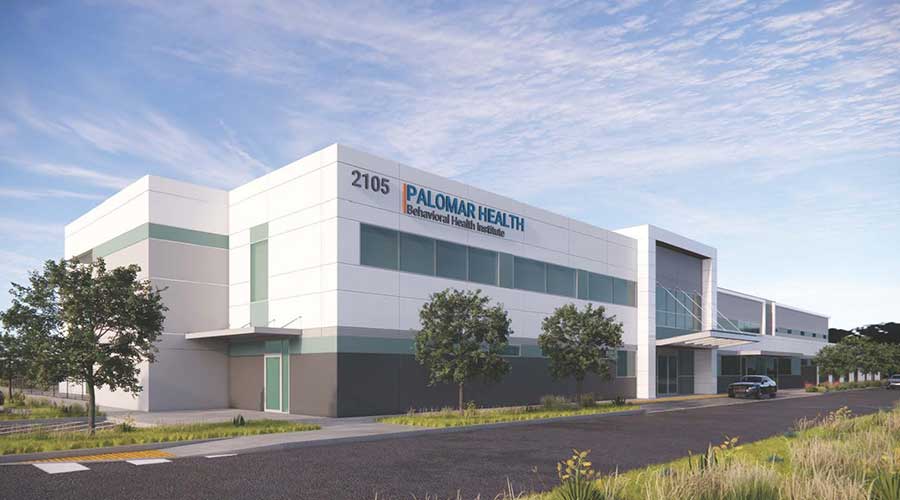Healthcare facilities – whether a hospital, urgent care center or walk-in clinic – have a universal mission: to provide patients with exceptional care in an environment where they can optimally heal. This mission is easily deterred when safety and security systems aren’t performing at an efficient rate, specifically with alarm systems.
As Internet of Things (IoT) devices become more prevalent and facilities are increasing the amount of data they process daily, traditional alarm systems are overwhelmed and struggle to give customers actionable information. In fact, it is estimated that over 90 percent of notifications are false alarms. Not only are these alarms wasting staff and emergency responders time, they can distract healthcare professionals and impact patient recovery. Traditional systems are siloed and without strong data correlation from other systems they become overloaded and less effective, decreasing functionality and impacting the overall safety and security of occupants and buildings while driving up operating costs. Taking the steps to reduce false alarm activity offers an opportunity to improve the efficiency of the team and atmosphere within healthcare facilities for the better. Continue reading to explore the three major benefits reducing false alarms can provide.
Reducing false alarms for improved operations
False alarms are costly nuisances. They are inconvenient and cause unnecessary disruptions and distractions. While it may seem like a heavy lift to consistently update or replace legacy equipment, there’s a simpler way to solve this problem by leveraging IoT and data analytics, and implement a false alarm reduction solution. This type of solution that leverages analytics, artificial intelligence (AI) and machine learning to help better protect critical assets, predict failures and provide insights into the risks in specific locations while limiting nuisance alarms.
By ingesting data from multiple sources, managers are notified when multiple alarms are triggered and can then assess the root cause that is triggering the false alarm to determine the best course of action. For example, when an employee using the wrong door for entry and exit because it is closer to his or her vehicle, or a legacy panel is causing unnecessary alarm activity due to misconfiguration on a critical environment like a medical supply room. Rather than moving forward with emergency protocols, AI and machine learning can help the facility manager determine the best course of action based on historical patterns and data insights from other systems. From there the security manager can determine the best course of action or send a notification to security personnel who can review the situation on-site. Limiting the number of false alarms is key to keeping a facility running smoothly. This in turn, allows the employees to remain focused on providing optimal patient care in a successful and safe environment.
Optimizing patient care
Ensuring patient care throughout all facets of treatment is necessary to be a successful healthcare provider. Facilities that are equipped with traditional security systems can ensure safe and secure environments for patients and employees through the notification of suspicious activity or intrusions. Most facilities have motion detection capabilities, and while this is important for protection against potential intrusions, it does have its disadvantages. Sometimes, alarms can often be initiated by non-emergencies, like balloons blowing in front of a sensor causing staff to enter emergency protocol procedures and ultimately taking their focus away from patients.
Security systems play a critical role in keeping occupants and assets secure, but when false alarms are continually triggered, they can disrupt sleep schedules for staff and patients. This directly affects their capability to provide top-notch care or a more seamless, easy recovery. Nurses and doctors often work long hours and need to take advantage of the times they have to rest, and reducing false alarms can help ensure that the staff are well rested and primed for success.
Strengthening security strategies
Healthcare leaders must have strong security strategies in place to keep occupants and assets safe from internal and external threats. In today’s world, that requires consistent views into facility accessibility and activity.
Leveraging an alarm monitoring service can help keep facilities focused on real emergencies and notify staff when an intrusion panel is triggered by a nuisance alert or when serious action needs to be taken should the system be compromised or at risk. Leveraging data for risk assessments can help determine the best proactive approach when situations like these arise.
When intrusion panels are integrated with software solutions that use AI and machine learning to predict maintenance, system downtime is reduced and allows for constant, consistent facility safety. AI and machine learning help to better understand the systems in place by identifying patterns and can provide recommended actions. The technology also takes into account numerous signals and can predict failure even before a critical event takes place. When the system requires a more extensive repair, corrective action provides notifications for service teams to be dispatched. The intelligence goes a step further to identify multi-dimensional factors paired with nonstandard arming patterns which can be causes of loss or serious risk to the facility, people and assets inside.
A proactive approach to facility safety
Reducing false alarms is necessary to allow employees to remain focused on what’s most important: ensuring proper patient care. By implementing digital solutions, healthcare leaders can advance their facility safety strategy to be proactive and preventative, rather than reactive. This saves resources and time as risk assessments are provided to eliminate alarm noises and unnecessary emergency response, ultimately reducing associated costs and helping employees maintain efficient care.
David Budzinski is the VP & GM of Global Midmarket Solutions, Digital Solutions for Johnson Controls.

 Third-Party Vendors May Pose Healthcare Cybersecurity Risks
Third-Party Vendors May Pose Healthcare Cybersecurity Risks Palomar Health Breaks Ground on Behavioral Health Institute
Palomar Health Breaks Ground on Behavioral Health Institute UNC Health Rex Files Plans for New Wake Forest Hospital
UNC Health Rex Files Plans for New Wake Forest Hospital 6 Steps to Reshaping Hybrid Healthcare Workplaces
6 Steps to Reshaping Hybrid Healthcare Workplaces Man Escapes Police Custody at California Hospital After Causing Car Crash
Man Escapes Police Custody at California Hospital After Causing Car Crash